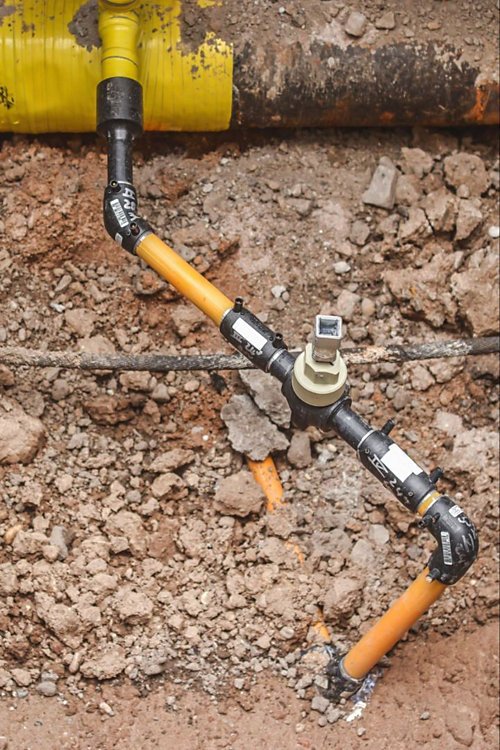
Exploring How Far Gas Lines Are Buried
Gas lines are typically buried at a depth of at least 18 inches but can go as deep as 36 inches. Understanding how far gas lines are buried is crucial for safety and construction projects. It’s essential to know the regulations in your area to prevent accidents and ensure compliance. In this blog article, we’ll explore in detail the importance of knowing how far gas lines are buried and the implications for various situations. Stay tuned for valuable insights and expert guidance.
How Far Are Gas Lines Buried: Exploring Depths and Safety Measures
Gas lines are an essential part of our infrastructure, responsible for delivering natural gas to homes, businesses, and other establishments. But have you ever wondered how deep these underground pipes are buried? In this article, we’ll delve into the depths at which gas lines are typically buried, the reasons behind these burial depths, and the safety measures in place to ensure the integrity of these vital conduits.
The Importance of Proper Burial Depths
Gas lines are buried underground for a variety of reasons, with one of the most critical being the protection of the pipes from external factors that could potentially damage them. By burying gas lines at specific depths, they are shielded from surface disturbances such as landscaping activities, construction work, and extreme weather events.
Typical Depths for Gas Line Burial
The standard depth at which gas lines are buried can vary depending on several factors, including the type of piping material used, local building codes, and soil conditions in a particular area. However, the general guideline is that gas lines should be buried at a minimum depth of 12 to 24 inches underground.
For areas where the ground is subject to freezing temperatures, gas lines are typically buried deeper to prevent them from being affected by frost heaving. In such regions, depths of 36 inches or more are not uncommon for gas line burial.
Factors Influencing Burial Depths
Several factors influence how deep gas lines are buried, with safety being the primary concern. Local building codes and regulations play a significant role in determining the minimum burial depths for gas lines to ensure compliance with safety standards and to protect the public and the environment.
Soil Type and Conditions
The type of soil in a particular area can affect how deep gas lines need to be buried. For example, rocky or unstable soil may require gas lines to be buried deeper to prevent them from being exposed or damaged. Soil conditions such as moisture content and compaction also play a role in determining burial depths.
Proximity to Other Utilities
Gas lines are often buried alongside other utilities such as water pipes, electrical lines, and sewer systems. When laying gas lines, contractors must take into account the proximity of these other utilities and ensure that gas lines are buried at a safe distance to prevent interference or accidental damage during maintenance or repair work.
Safety Measures for Underground Gas Lines
Ensuring the safety and integrity of underground gas lines is paramount to prevent leaks, explosions, and other hazards. To achieve this, several safety measures are put in place during the installation, maintenance, and monitoring of gas lines.
Regular Inspections and Maintenance
Gas line operators conduct regular inspections and maintenance to detect any signs of corrosion, leaks, or other issues that could compromise the integrity of the pipelines. By identifying and addressing problems early, operators can prevent potential accidents and ensure the continued safe operation of gas lines.
Emergency Response Plans
In the event of a gas leak or other emergency, gas line operators have emergency response plans in place to quickly address the situation and minimize risks to the surrounding area. These plans include procedures for evacuating residents, shutting off gas supply, and coordinating with local authorities to contain the situation.
Gas lines play a crucial role in delivering natural gas to homes and businesses, and ensuring their safe and efficient operation requires careful planning and adherence to safety protocols. By burying gas lines at appropriate depths, following local regulations, and implementing robust safety measures, we can help protect the integrity of underground gas pipelines and minimize the risks associated with their operation.
Next time you see a construction crew working on a road or in a neighborhood, remember that beneath the surface lies a network of gas lines buried at just the right depth to keep our communities safe and warm.
How Deep Are Gas Lines Buried?
Frequently Asked Questions
How deep are gas lines typically buried?
Gas lines are usually buried between 12 and 24 inches underground. However, the exact depth may vary based on local codes, soil conditions, and other factors. In some cases, they may be buried even deeper to ensure safety and compliance with regulations.
What determines the depth at which gas lines are buried?
The depth at which gas lines are buried is determined by various factors such as the type of soil, local building codes, proximity to other utilities, and level of traffic above the lines. These factors help ensure the safety and integrity of the gas lines.
Why is it important to know the depth of buried gas lines?
Knowing the depth of buried gas lines is crucial for the safety of individuals and property. It helps prevent accidental damage during excavation or construction activities. Awareness of the depth also aids in planning and maintaining the gas infrastructure effectively.
Can gas lines be buried shallower than the recommended depth?
No, gas lines should not be buried shallower than the recommended depth specified by local regulations or codes. Proper burial depth is essential for the protection and integrity of the gas lines, reducing the risk of damage and ensuring the safety of the surrounding area.
Final Thoughts
Gas lines are typically buried 18-24 inches underground to protect them from damage and ensure safety. Proper depth varies based on local codes and the type of soil. Understanding how far gas lines are buried is crucial for anyone planning excavation work to prevent accidents and service interruptions. Always contact local utility companies before digging to confirm the exact depth of gas lines. Remember, safety first when it comes to dealing with buried gas lines.


